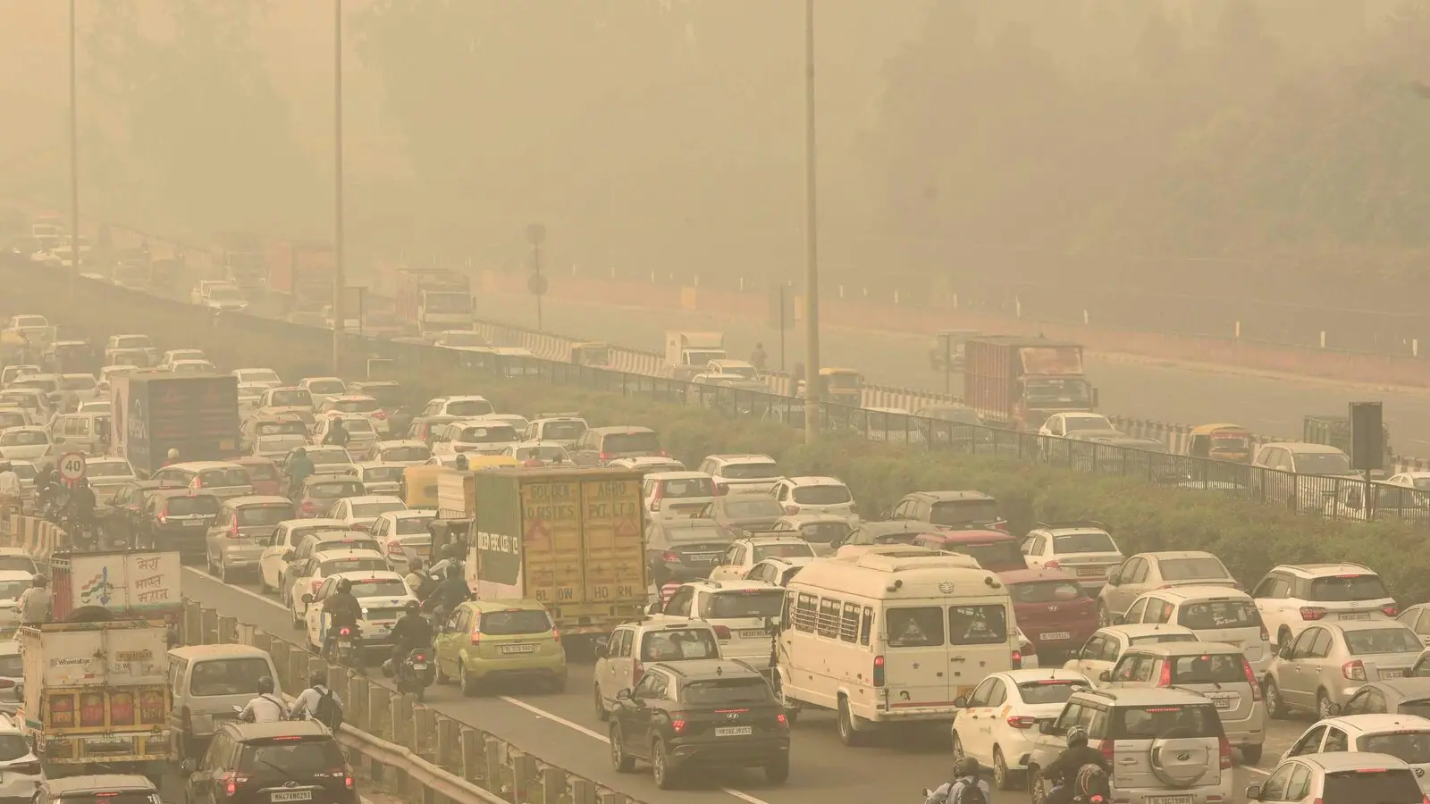Free Courses Sale ends Soon, Get It Now


Free Courses Sale ends Soon, Get It Now



Copyright infringement not intended
Picture Courtesy: https://www.livemint.com/news/india/top-10-polluted-cities-in-india-with-aqi-above-400-check-full-list-11667546088371.html
Context: According to a recent report, 15 cities in India recorded PM2.5 levels more than double the prescribed standard in January 2024, with Delhi and Bhagalpur ranking as the most polluted cities.
Key Highlights of the Study
Air Pollution
|
Aspect |
Description |
Examples |
|
What is air pollution? |
The presence of harmful or excessive substances in the air that negatively affects human health, the environment, and ecosystems. |
Particulate matter (PM2.5, PM10), ozone, nitrogen dioxide, sulfur dioxide, carbon monoxide, volatile organic compounds (VOCs) |
|
Types of air pollutants: |
Primary: emitted directly from sources. Secondary: formed from reactions between primary pollutants and sunlight or other chemicals. |
PM (from combustion and abrasion), SO2 (from fossil fuel burning), NO2 (from vehicle exhaust), CO (from incomplete combustion), ozone (formed from NO2 and VOCs) |
|
Sources of air pollution: |
Stationary: industries, power plants, agriculture |
Factory emissions, dust from farms |
|
Health effects: |
Depends on the type and level of exposure, individual health, and duration. |
Short-term: coughing, wheezing, eye irritation, headaches. Long-term: respiratory diseases, heart disease, cancer, cognitive decline. |
|
Environmental effects: |
Acid rain, damage to plants and ecosystems, reduced visibility. |
Degraded forests, algal blooms, loss of biodiversity |
|
Economic impacts: |
Healthcare costs, lost productivity, damage to crops and buildings. |
Billions of dollars globally |
|
Monitoring and measurement: |
Air quality monitoring stations, satellite data, and individual sensors. |
Air Quality Index (AQI), PM2.5 concentration |
|
Solutions and mitigation: |
Reducing emissions, cleaner technologies, renewable energy, and sustainable practices. |
Electric vehicles, catalytic converters, energy efficiency standards, sustainable agriculture |
Conclusion
Must Read Articles:
AIR POLLUTION INDIA: https://www.iasgyan.in/daily-current-affairs/air-pollution-india#:~:text=India%20has%20an%20average%20PM2,threshold%20by%20an%20alarming%20500%25%20.
Air pollution impact on Rural and Urban areas: https://www.iasgyan.in/daily-current-affairs/air-pollution-impact-on-rural-and-urban-areas
|
PRACTICE QUESTION Q. Which technology aims to capture carbon dioxide emissions from power plants to prevent them from entering the atmosphere? A) Catalytic converters B) Electrostatic precipitators C) Carbon Capture and Storage D) Scrubber systems Answer: C Explanation: Catalytic converters reduce harmful emissions from vehicle exhaust, while electrostatic precipitators remove particulate matter from industrial emissions. Scrubber systems capture specific pollutants like sulfur dioxide. CCS focuses on capturing and storing CO2 emissions from power plants. |
© 2024 iasgyan. All right reserved